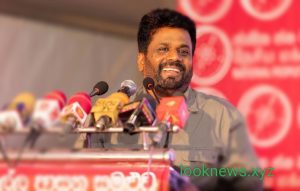Left-leaning politician Anura Kumara Dissanayake has been elected as Sri Lanka’s next president after winning the country’s first election since its economy collapsed in 2022. The 55-year-old defeated opposition leader Sajith Premadasa in a historic second round of counting that included second-preference votes. Outgoing president Ranil Wickremesinghe came in third.
This marks a remarkable turnaround for Dissanayake, who received just 3% of the votes in the 2019 election. As the candidate for the National People’s Power (NPP) alliance, he has gained support for his anti-corruption stance and pro-poor policies, especially during the ongoing economic crisis affecting millions.
-
Anura kumara
Dissanayake, born on November 24, 1968, in Galewela, Sri Lanka, grew up in a middle-class, multicultural environment. Educated in public schools and holding a degree in physics, he entered politics as a student around the time of the Indo-Sri Lanka Agreement in 1987, a period that led to significant violence in the

rom 1987 to 1989, he became associated with the Janatha Vimukti Peramuna (JVP), a Marxist political party that led a violent insurrection against the Sri Lankan government. This conflict, fueled by discontent among the rural youth, resulted in widespread attacks and the loss of thousands of lives.
Dissanayake was elected to the JVP’s central committee in 1997 and became its leader in 2008. He has since expressed remorse for the violence during that tumultuous period, stating in a 2014 BBC interview, “A lot of things happened during the armed conflict that should not have happened. We are always deeply saddened and shocked about that.” Currently, the JVP holds only three seats in parliament and is part of the NPP coalition that Dissanayake leads.